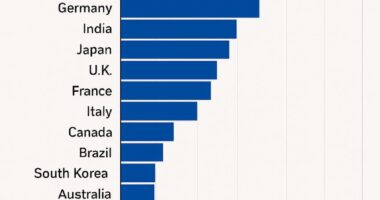Table of Contents
- Introduction
- Assessing Your Current Financial Situation
- Setting Retirement Goals
- Understanding Retirement Accounts
- Creating a Comprehensive Budget
- Exploring Investment Options
- Evaluating Social Security Benefits
- Considering Healthcare Costs
- Planning for Inflation
- Consulting Financial Professionals
- Conclusion: Your Future Awaits
Introduction
Reaching the age of 50 brings both opportunities and challenges when it comes to retirement planning. At this stage, many individuals find themselves reflecting on their financial futures and considering how best to secure a comfortable retirement. With the right strategy, it’s possible to build a solid foundation that enables you to enjoy your golden years.
Assessing Your Current Financial Situation
Before diving into retirement planning, it’s essential to assess your current financial circumstances. This involves evaluating your income, expenses, assets, liabilities, and savings. A clear understanding of where you stand will inform your retirement strategy.
Evaluating Income Sources
Identify all sources of income, including your salary, rental income, and any investment returns. This evaluation will help you understand how much you can potentially contribute to your retirement savings.
Analyzing Expenses
Track your monthly expenses to determine how much you’re spending. This includes fixed costs, such as mortgage payments, and variable expenses, like entertainment. Understanding your spending habits can help you identify areas for reduction, allowing you to allocate more toward savings.
Reviewing Assets and Liabilities
List your assets, including property, investments, and savings accounts. Likewise, document your liabilities, such as loans and credit card debt. This comprehensive view will give you insight into your net worth and your readiness for retirement.
Setting Retirement Goals
Establishing clear retirement goals is a crucial step in the planning process. Consider what you envision for your retirement lifestyle, including where you plan to live, the activities you want to pursue, and if you plan to travel.
Determining Retirement Age
Decide when you would like to retire. Do you aspire to retire early at 62, or do you plan to work until 70? Your retirement age impacts how much you need to save and the strategies to implement.
Estimating Necessary Retirement Income
Calculate how much yearly income you will require during retirement. Take into account your current expenses, lifestyle changes, and potential healthcare costs. A common rule of thumb suggests that retirees may need about 70%-80% of their pre-retirement income to maintain their standard of living.
Understanding Retirement Accounts
Familiarity with different retirement accounts is essential for building wealth for retirement. At 50, it’s important to maximize contributions to these accounts.
401(k) Plans
If your employer offers a 401(k) plan, take advantage of it. Contributing to this retirement account allows for tax-deferred growth. Additionally, many employers offer matching contributions, which is essentially free money.
IRAs and Roth IRAs
Explore the benefits of Individual Retirement Accounts (IRAs) and Roth IRAs. Traditional IRAs offer tax-deductible contributions, while Roth IRAs provide tax-free withdrawals in retirement. Depending on your current income and tax situation, one may be more advantageous than the other.
Catch-Up Contributions
At 50, catch-up contributions allow you to save additional funds in both 401(k)s and IRAs. For 401(k)s, you can contribute an extra $6,500, and for IRAs, the additional contribution is $1,000. Take advantage of this provision to accelerate your savings.
Creating a Comprehensive Budget
A well-structured budget is key to effective retirement planning. It not only helps in tracking expenses but also allows you to allocate funds toward your retirement goals.
Expense Categorization
Break down your expenses into categories, such as housing, transportation, groceries, entertainment, and healthcare. Knowing where your money goes can highlight areas that could be trimmed.
Adjusting for Retirement
Consider how retirement will change your financial landscape. While some expenses may decrease, such as commuting costs, others, like healthcare, may increase. Adjust your budget to reflect these changes and plan accordingly.
Prioritizing Savings
Make saving for retirement a priority in your budget. Aim to set aside a percentage of your income each month for retirement accounts, ensuring that you remain on track toward your goals.
Exploring Investment Options
Investing is a critical component of accumulating wealth for retirement. Understanding different investment vehicles will help you build a diversified portfolio.
Stocks and Bonds
Consider allocating a portion of your portfolio to stocks and bonds. Stocks offer the potential for capital appreciation, while bonds provide a more stable source of income. A balanced approach can help mitigate risk while pursuing growth.
Mutual Funds and ETFs
Mutual funds and exchange-traded funds (ETFs) allow for diversification without requiring extensive research into individual stocks. These funds pool resources from multiple investors to purchase a range of assets, spreading risk.
Real Estate Investments
Real estate can be an excellent long-term investment, providing both rental income and property appreciation. If managed well, real estate can significantly contribute to your retirement portfolio.
Evaluating Social Security Benefits
Understanding how Social Security fits into your retirement plan is crucial. Social Security benefits can significantly supplement your income during retirement.
Age of Benefits
Decide when you intend to start collecting Social Security benefits. You can begin receiving reduced benefits as early as age 62 or wait until full retirement age (FRA) for the maximum amount. Delaying benefits can result in a substantially higher monthly payment.
Estimating Your Benefits
Use the Social Security Administration’s online calculator to estimate your monthly benefits based on your work history. Knowing this figure will help you incorporate it into your retirement income planning.
Considering Healthcare Costs
Healthcare can be one of the most significant expenses in retirement. Planning for these costs is essential to avoid unexpected financial burdens.
Medicare and Other Health Insurance
Familiarize yourself with Medicare, which typically becomes available at 65. Understand the different parts of Medicare, including hospital insurance (Part A) and medical insurance (Part B), to evaluate your healthcare coverage properly.
Long-Term Care Insurance
Consider the possibility of needing long-term care. Long-term care insurance can provide financial support if you require assistance with daily activities as you age. Evaluate whether this insurance aligns with your retirement strategy.
Planning for Inflation
Inflation can erode your retirement savings over time. Having a plan in place to counteract inflation is essential.
Historical Inflation Rates
Consider the average inflation rates over the past decades, which can help you assess how much you need to save. Make sure your investment strategy includes assets that typically outpace inflation, such as stocks or real estate.
Adjusting Withdrawals
During retirement, be prepared to adjust your withdrawal strategy based on inflation. This may mean increasing your withdrawals over time to maintain your purchasing power.
Consulting Financial Professionals
Navigating through retirement planning can be complex, and seeking help from financial professionals can provide significant value.
Finding a Financial Advisor
Look for a qualified financial advisor with experience in retirement planning. Check their credentials, reviews, and whether their approach aligns with your financial goals.
Regular Financial Reviews
Work with your advisor to conduct regular reviews of your financial plan. Life circumstances and economic conditions change, and adjusting your plan accordingly will help you stay on track.
Conclusion: Your Future Awaits
Planning for retirement at 50 is an empowering step towards securing your future. By assessing your financial situation, setting clear goals, understanding your income sources, and making informed investment decisions, you can build a robust retirement strategy. Don’t forget the importance of consulting professionals and adjusting your plans as needed. Embrace this opportunity to take control of your retirement journey, ensuring that your later years are filled with joy and financial security.








